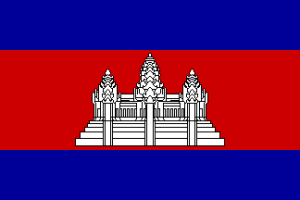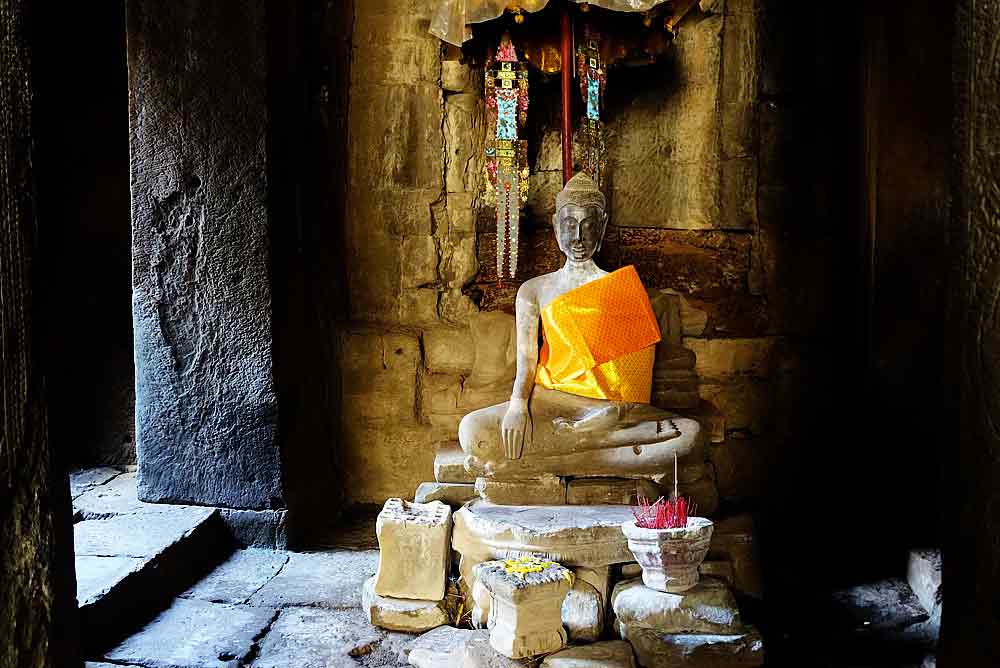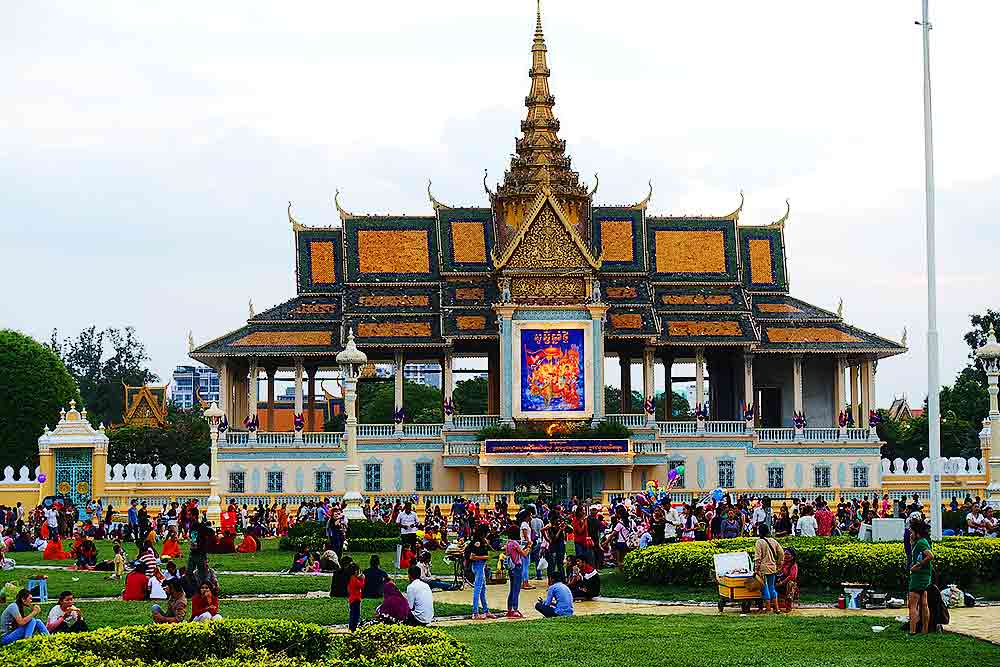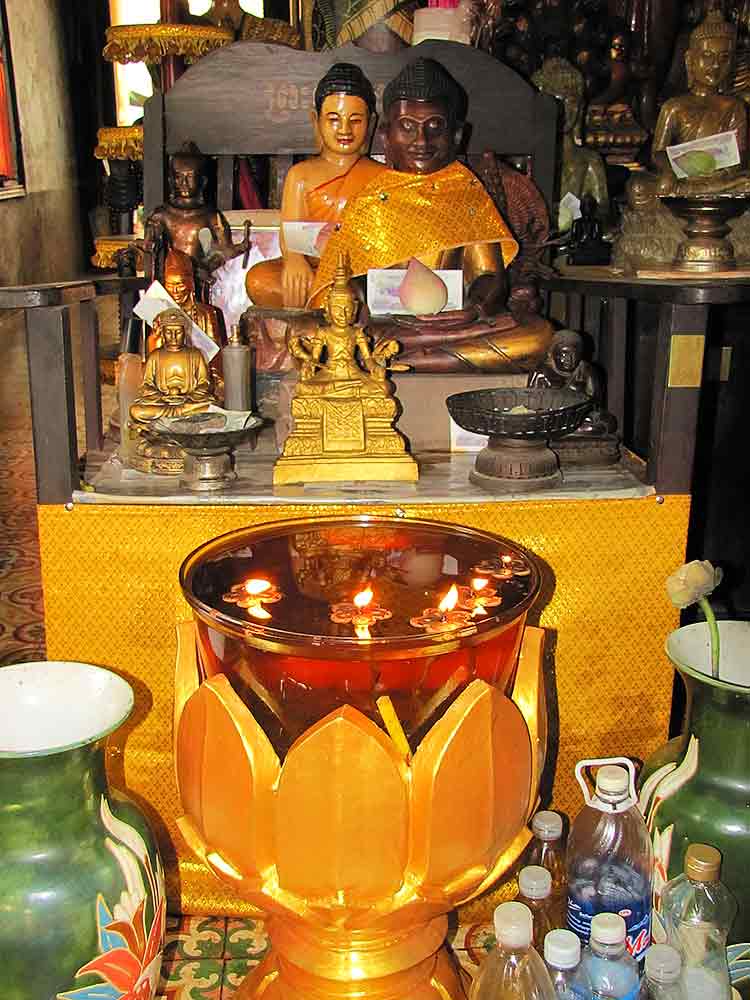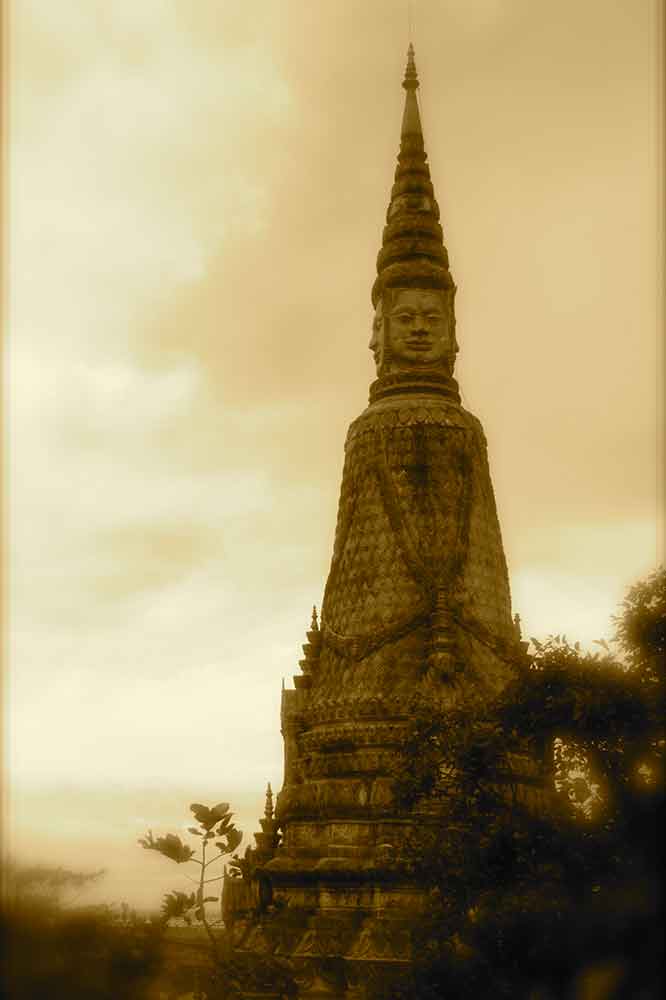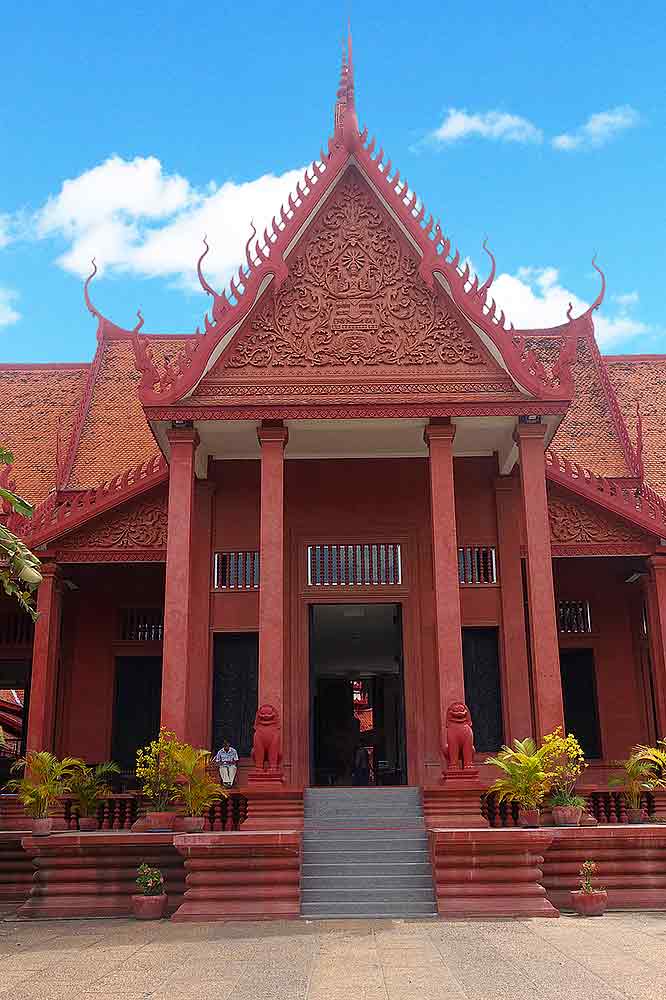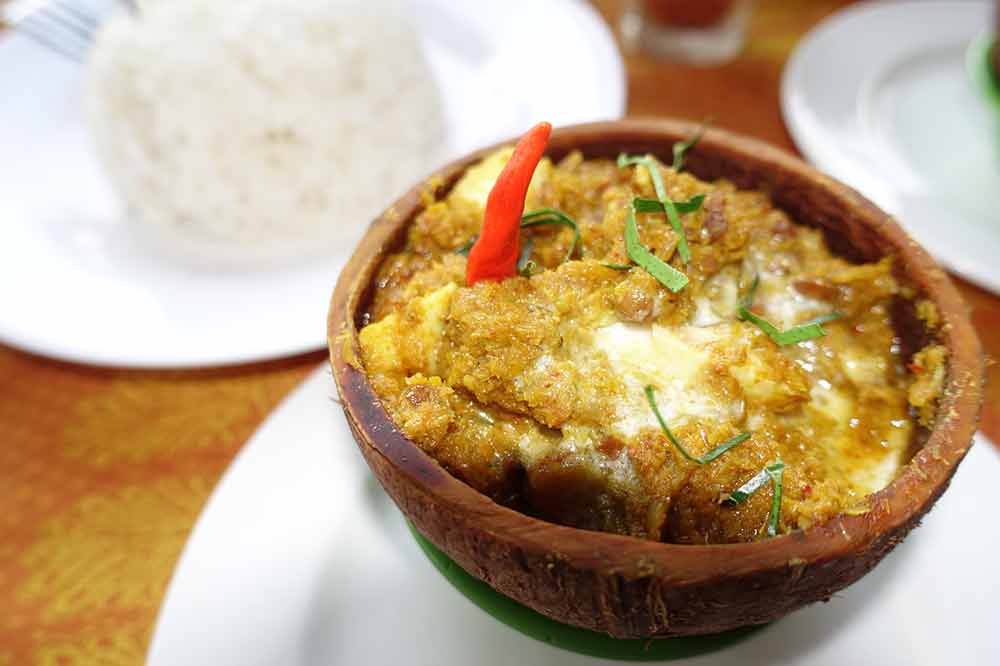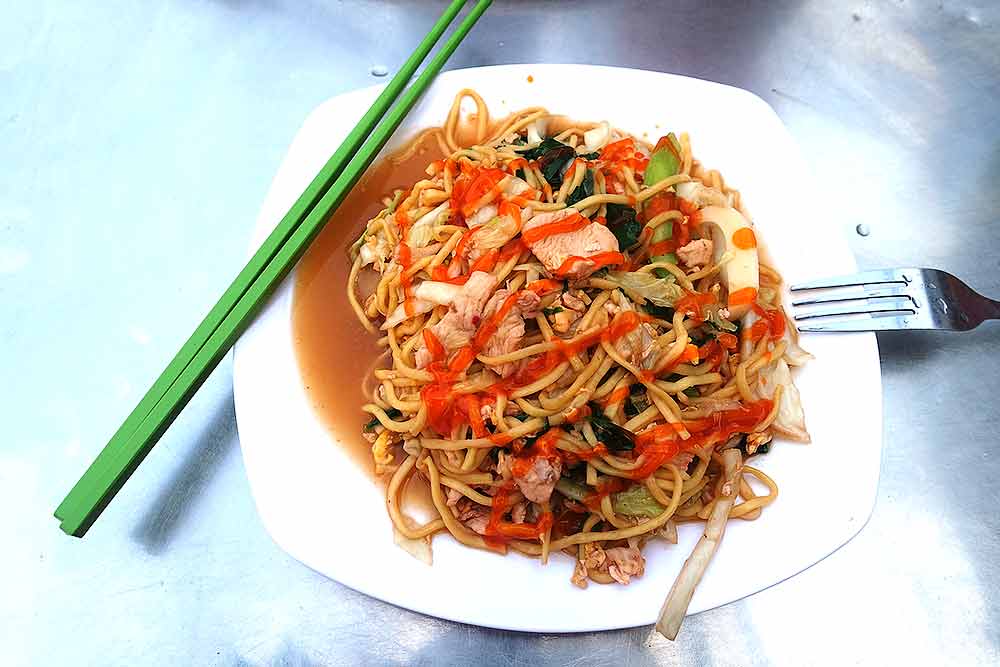Cambodia Travel Guide
Geography of Cambodia
Cambodia lies entirely within the tropical zone. It borders Thailand to its west, Vietnam to its east, and Laos to its north. The Gulf of Thailand is to its southwest.
The beaches in Cambodia are extremely popular with travelers. Cambodia has an area of 69,900 square miles (181,035 square km). Its topography is dominated by a low central plain with some hilliness in specific areas.
The great Tonle Sap Lake, which is also the name of the river flowing from it, is a primary waterway for transportation as well as for food. The Mekong River also flows through the middle of Cambodia, including around Phnom Penh, the nation’s capital.
The highest point in Cambodia is in a remote and sparsely populated area known as the eastern highlands. It’s called Phnom Aural, which peaks at an elevation of 5,950 feet (1,814 meters).
Much of the eastern part of Cambodia is forested uplands, but the central part, outside of Phnom Penh, is flat and thinly forested.
The land is largely undeveloped and sparse in population. In the west, near Siem Reap and the temples of Angkor, rich jungle dominates the landscape.
Major Holidays in Cambodia
Holidays in various countries are always a great opportunity to get to know more about the culture and what people do to have fun during celebrations.
Historically, Cambodia has held to a lunar calendar, known as Chhankitek in Khmer. Thus, many traditional Khmer holidays are floating ones, that is, subject to fall on different dates every year.
The primary exceptions are the Khmer New Year, which is based on the solar calendar, and important historical dates.
The major holidays of Cambodia are:
Victory Day (January 7): This national holiday commemorates the fall of the Khmer Rouge regime in 1979.
Khmer New Year (April 14-16): This is the most important national holiday in Cambodia, with celebrations lasting for three days. Most Cambodians will travel back to their hometowns to be with family and friends.
Visaka Bochea (April or May): This floating holiday celebrates the birth, enlightenment, and passing of the Buddha. As Buddhism is by far the predominant faith in Cambodia, this is an important holiday everywhere in the land.
International Labor Day (May 1): This holiday celebrates the important contributions of workers to the economic and social life of the nation.
The King’s Birthday (May 13-15): This holiday celebrates the birthday on May 14, 1953, of the current king of Cambodia, Norodom Sihamoni.
Queen Mother’s Birthday (June 18): The Queen Mother is a very respected figure in Cambodia. She was born on June 18, 1936.
Ancestors’ Day (September or October): During this floating holiday, Buddhists pay respect to their ancestors by preparing meals and donating them to monks on behalf of the deceased relatives. Other offerings are made to the ancestors in homes and temples.
Independence Day (November 9): Cambodia became independent from France on November 9, 1953. This holiday commemorates that event.
Visa Requirements for Cambodia
Cambodia really has its act together when it comes to providing visas for tourists. All visitors to Cambodia must have a visa to enter the country with exceptions only for nationals of the following countries: Laos, Malaysia, Philippines, Singapore, Vietnam, Thailand, and Indonesia.
e-Visa for Cambodia
I have used the Cambodia e-Visa twice now, once when flying into Phnom Penh and once when entering overland from Vietnam. I only recommend getting an e-Visa if you are flying in.
The entry at the airport with an e-Visa was smooth. On the other hand, at the border, there was actually an extra step I had to go through before I could line up at the passport check area. I thus ended up being one of the LAST people on my bus to go through the line. Not worth it!
If you do want to use the e-Visa at the airport, it IS worth it. The cost is US$37 and can be applied for by visiting the official website of the Cambodian Ministry of Foreign Affairs.
You can enter all the information regarding your name, passport number, etc. into the secure website and then pay by credit card. It takes about three business days to process. You will receive an email from the Ministry of Foreign Affairs with a PDF attachment. This will be your visa, which you must print in color before your departure.
Visa-on-Arrival for Cambodia
If you do not wish to go the e-Visa route, it is easy to get a visa-on-arrival for Cambodia. In fact, most airlines will provide you with the paperwork to complete while en route on the flight. Buses from Vietnam will actually have someone on the bus who will complete the paperwork for you.
Also, Cambodia’s two major airports, Phnom Penh and Siem Reap, provide visas-on-arrival and really do great at making the process as smooth as possible.
The fee for a visa-on-arrival is US$30 (only US dollars are accepted).
A 1.5 x 2.5-inch (4 x 6 cm) photo is requested, but don’t worry if you don’t have one. For another US$2.00, they can scan your passport photo to use for your visa.
Traveling to Cambodia
Cambodia is a magical place that will stimulate all your senses. From the beautiful scenery to the delicious cuisine and the friendly people, Cambodia offers a delightful place to travel.
Cambodia is a magical place that will stimulate all your senses. From the beautiful scenery to the delicious cuisine and the friendly people, Cambodia offers a delightful place to travel.
Getting into Cambodia is not difficult. Though not many travelers fly directly from their home airport to Phnom Penh’s airport, primarily due to higher costs, it is possible to do so.
However, most visitors to Cambodia begin their Southeast Asia tours in Thailand or Vietnam, and then take a bus or local flight or bus ride to Cambodia from there.
Busses depart from Ho Chi Minh City in Vietnam to Phnom Penh, Cambodia’s capital, several times daily. The trip takes about six hours, including the border crossing and stopping for lunch for about 45 minutes.
Hotels are plentiful in larger cities, such as Phnom Penh and Siem Reap, and prices run the wide range from backpacker accommodations to luxury venues.
It’s best to book your hotel in advance of arrival, as it’s much easier to know exactly where you are going when you get there.
Things to Do in Cambodia
A well-rounded itinerary for things to do in Cambodia to enjoy a very memorable visit could include visiting Phnom Penh, Siem Reap (the closest city to Angkor Wat), and a coastal location, such as Kampot or Kep, which have very decent beaches.
In Phnom Penh, you can easily have a very enjoyable and rich cultural experience by simply walking around and taking in the exciting scenes that arise before your eyes.
There is a multitude of excellent but inexpensive restaurants throughout the city, especially near the river along Sisowath Quay, and you can get some good bargains in shops and markets.
In addition to Phnom Penh, the country is home to what may be the world’s most famous temple sites around the ancient city of Angkor, near Siem Reap.
The temples are magnificent (movies have been filmed on some sites) and Angkor was once considered the most advanced civilization in the world!
Visiting here can be a life-changing experience.
After enjoying all that Phnom Penh and the temples of Angkor have to offer, head over to the coast to a quiet and relaxing beach near Kep or Kampot.
The white sands, clear blue water, and lush scenery are sure to captivate your senses.
If you like seafood, you’ll find many restaurants serving delicious dishes at a fraction of the cost back home.
Precautions When Traveling in Cambodia
Traveling in Cambodia is very safe. Blatant violent crimes against expat travelers are rare. You are, however, a target for pickpockets and bag/camera/phone snatchers. Be very vigilant when carrying these items and always be aware of what is going on around you.
Keep your wallet in your front pocket. It is much more difficult for pickpockets to get your wallet out of your front pocket than your back one.
Also, keep handbags, backpacks, cameras, etc. firmly in your grip at all times, but especially in crowded areas like markets and tourist attractions.
When venturing out from the cities and heavily trafficked areas, be mindful that Cambodia was very heavily land-mined during recent wars. Never venture off well-traveled paths, as some mines may still be active, even after all these years.
Khmer Food
You really can’t go wrong with Cambodian food. It is as delicious as it is unique and is quite healthy as well. Eating is definitely one of the best things to do in Cambodia.
Cambodian food consists of curries, stir-fried meats and vegetables, soups, grilled fish, noodles, rice, and salads.
Cambodians also love to eat lots of vegetables and delicious tropical fruits. Rice, which is the staple food for Cambodians, is served at almost every meal, although noodle dishes are very popular as well.
Starter Menu
If you have not yet become familiar with Cambodian food, here are some recommendations to get you started.
Cambodian Red Curry: Made with either chicken, fish, or beef, this curry dish is less spicy than the Thai version, but just as tasty. Other ingredients include coconut milk, eggplant, potatoes, green beans, and lemongrass.
Amok: Made with fish or chicken (the more traditional being fish), this is one of the signature dishes of Cambodian food. It’s similar to a fish curry, but milder in taste and with the addition of slok ngor, an herb grown locally that imparts a slightly bitter flavor. Best eaten with rice and a side of vegetables.
Bai Sach Chrouk (Pork and rice): A tasty dish commonly served for breakfast, bai sach chrouk is pork that is first marinated in coconut milk and garlic, and then slow roasted over hot coals to juicy perfection. The pork is then thinly sliced and served with a generous portion of broken rice. It is often served with a side of chicken-broth soup, pickled vegetables, and ginger. It is a simple meal very popular with locals all over Cambodia.
Cambodia Weather
Cambodia lies within the tropical climate zone and its weather is affected by monsoons. It is typically warm and humid throughout the year, but there are two distinct seasons, rainy and dry.
The rainy season runs from about June to October, with average temperatures of 80°-95°F (27°-35°C).
During the months from July to September, most of the country experiences almost daily rains, some of which can cause serious flooding, both in cities as well as in rural locations.
However, in a recent bid to protect its crucial tourism industry, Cambodia’s primary travel routes, such as from Phnom Penh to Siem Reap and Sihanoukville, have been greatly improved and are not so affected by heavy rains anymore.
The dry season runs from October to May but can be further divided into a “cool” period and a hot period. The cool period spans November to February and sees temperatures from 63°-80°F (17°-27°C).
The dry hot period spans March to May and brings temperatures from 84°-100°F (29°-38°C).
Learn More About Travel to Cambodia
I hope you enjoyed my Cambodia Travel Guide. For more great information and tips for travel to Cambodia, please see my blog posts below.
5 Best Places to visit in Cambodia: A Complete Guide for Travelers
Want to know the best places to visit in Cambodia? When it comes to planning your unforgettable trip to Southeast Asia, Cambodia is definitely a country worth adding to your plans. From its stunning ancient temples and rich history to its vibrant culture and delicious...
Visiting Wat Phnom in Phnom Penh, Cambodia
Visiting Wat Phnom in Phnom Penh, Cambodia, is a must when visiting this nation's capital. Wat Phnom is one of the most revered and oldest temples in the city. As you explore this stunning temple, you'll find yourself transported to another world, where ancient...
How to Make the Most of Your Angkor Wat Tour in Cambodia
While visiting Cambodia, one of the top things to so is to take an Angkor Wat tour. Here, your will experience the majestic temples that legends are made of. Angkor, the ancient capital city of the Khmer Empire, is home to some of the most magnificent temples in the...
Get the Book
Available as an eBook or paperback, this all-in-one guide will provide the beneficial information to help you plan and enjoy your trip with efficiency and lower stress.
Get all the great lessons in the Travel Guides plus a lot more details. You get all the great tips to experience smarter travel to Southeast Asia.

